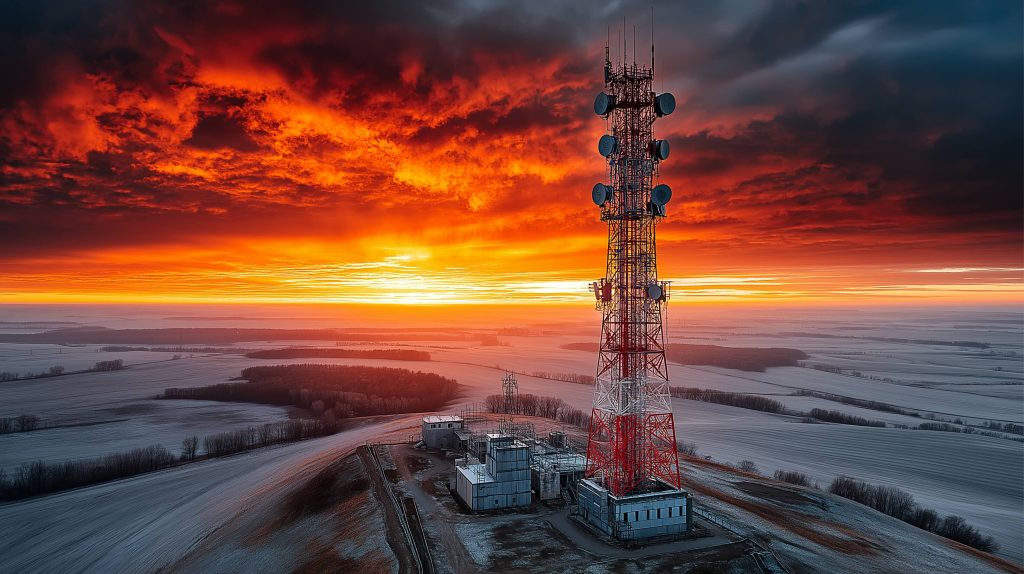- In March 2025 Ukraine’s Ministry of Defense created a Space Policy Directorate to coordinate military space efforts.
- The crowdfunded ICEYE SAR satellite nicknamed the “People’s Satellite” remained Ukraine’s only satellite under national control, since 2022.
- Deputy Defense Minister Kateryna Chernohorenko outlined a 2030 roadmap to deploy Ukrainian defense satellites and an air-launch early-warning system.
- In June 2025 the European Space Agency council reinforced collaboration with Ukraine’s SSAU, providing technical assistance on Earth observation, space weather, and exploration.
- In April 2025 the EU Commission and Ukraine signed an agreement enabling participation in the EU Space Programme with access to Copernicus data and SWE/NEO initiatives.
- PolyITAN-12U, a 20-kg, 12-unit cubesat built at Kyiv Polytechnic Institute, carries a sub-meter optical imager (0.56–0.73 m) and was planned for launch in 2024.
- In November 2024 Germany funded a contract with ICEYE and Rheinmetall to provide dedicated SAR capacity and access to ICEYE’s full satellite fleet for Ukraine.
- In June 2025 a Ukraine-led Intermarsat consortium proposed a constellation of 70+ Earth observation satellites to deliver daily imagery along the Russian border, aiming to raise more than €100 million.
- In July 2025 Denmark joined EU drives by donating secure satcom services and terminals via the EU Defence Agency to Ukraine’s military communications.
- NASA Harvest data in 2024-2025 mapped crops with Sentinel-2 and PlanetScope, identifying over 2.5 million crater impacts, including 1.2 million in croplands.
Introduction: War Sparks a New Space Race in Ukraine
Russia’s full-scale invasion has dramatically accelerated Ukraine’s drive into the satellite age. Once a quiet player in space, Ukraine in 2024-2025 is treating satellites as strategic necessities rather than luxuries Gov. Under the pressures of war, the country has launched ambitious new programs, forged international partnerships, and harnessed commercial space technology to gain an edge on the battlefield and rebuild its economy. “Space is a domain that is increasingly calling for defense policy attention,” Danish Defense Minister Troels Poulsen remarked in mid-2025, noting how strengthening Ukraine’s satellite capabilities has become vital in the fight against Russia Thedefensepost. This report provides a comprehensive look at Ukraine’s satellite and space-related developments during 2024 and 2025 – from government initiatives and international collaborations to military reconnaissance, private sector projects, and the transformative use of satellite services in war and peace.
Government Space Initiatives and SSAU Programs (2024-2025)
Rebooting Space Governance Amid Conflict: In March 2025, Ukraine’s Ministry of Defense established a new Space Policy Directorate to coordinate the nation’s military space efforts Gov Gov. With only one satellite under national control at the time – the famous crowdfunded ICEYE SAR satellite nicknamed the “People’s Satellite” – officials acknowledged Ukraine must “transition from the role of consumer to that of a full-fledged player in the space sector” Gov. Deputy Defense Minister Kateryna Chernohorenko outlined an ambitious roadmap: by 2030, Ukraine plans to deploy its own satellites for defense purposes and even an air-launch early-warning system for missile threats Jamestown. The immediate priority is developing a national satellite communications system to reduce dependence on foreign providers Jamestown, while longer-term goals include an independent constellation for reconnaissance and participation in international space exploration programs.
State Space Agency Resilience: Ukraine’s State Space Agency (SSAU) has worked to keep core projects alive despite wartime disruptions. The national space program that was pending parliamentary approval in 2022 – which envisioned new Earth observation satellites and launch vehicle development – had to be paused due to the war Defence24 Defence24. However, SSAU maintained international cooperation, preserving its roles in joint projects like the Antares and Vega launch vehicles and the planned Cyclone-4M rocket with Canada Defence24. Even as funding was constrained, Ukrainian space enterprises in 2024 continued to refocus on Western partnerships and rebuild away from legacy Russian ties Defence24. This paid off in June 2025, when ESA’s council approved a reinforced collaboration with SSAU – providing Ukraine technical assistance in space exploration, Earth observation (for agriculture and ecological monitoring), and space weather expertise Esa. It builds on a long-standing framework agreement and renews Ukraine’s drive to integrate with Europe’s space community.
European Union Partnerships: A major milestone came in April 2025, when the European Commission and Ukrainian government signed an agreement enabling Ukraine’s participation in key components of the EU Space Programme Europa. This deal grants Ukraine access to Copernicus Earth observation data (crucial for energy, food security, and reconstruction planning) and involvement in the EU’s Space Weather (SWE) and Near-Earth Objects (NEO) monitoring initiatives Europa Europa. It marks “the first step in Ukraine’s ever closer association to the Union Space Programme,” the European Commission noted, and will bolster Ukraine’s recovery by enriching its space sector capacity Europa Europa. In parallel, Ukraine accelerated talks to join the European Space Agency as a member state. While full ESA membership is a longer process, Kyiv’s intensified engagement – and Poland’s strong support – underscores that integrating with Europe’s civilian space endeavors is seen as “extremely important for our common victory” and post-war development, as SSAU chief Volodymyr Taftai put it Defence24 Defence24.
Ukrainian Satellites on the Horizon: Despite the war, Ukraine has initiated new satellite projects at home. Notably, the government in late 2023 funded the completion of PolyITAN-12U, a student-built 12-unit cubesat developed at Igor Sikorsky Kyiv Polytechnic Institute with SSAU support Gov. This 20-kg microsatellite – equipped with an optical imager capable of sub-meter (0.56–0.73 m) resolution – will be Ukraine’s most high-resolution Earth observation satellite ever when launched Universemagazine. The plan is to launch PolyITAN-12U in 2024, pending international rideshare arrangements Gov. The project demonstrates Ukraine’s commitment to nurturing homegrown space talent even amid conflict, and it establishes a full domestic capability in designing, building, and testing nanosatellites Gov Gov. If successful, it could pave the way for a whole new generation of university-built satellites and help train highly qualified specialists in space technology Gov. In short, Ukraine’s government and SSAU spent 2024-2025 laying critical groundwork – policy, partnerships, and pilot projects – to ensure the nation emerges from war with a robust, modern space infrastructure.
Military Satellites and Reconnaissance: “The People’s Satellite” and Beyond
Eyes in the Sky for the Battlefield: The war in Ukraine has been called the first major “commercial space war” – and Ukrainian forces have leveraged satellites to an unprecedented extent for intelligence and reconnaissance. Central to this effort is the ICEYE Synthetic Aperture Radar (SAR) satellite purchased via a public crowdfunding campaign in 2022. By 2024, this so-called “People’s Satellite” was wreaking havoc on Russian targets Politico Politico. Ukraine’s military intelligence (HUR) hailed the results as “over the moon,” confirming that the micro-SAR satellite has allowed them to continuously spy on Russian troop movements, equipment, and supply routes even through clouds or at night Politico Politico. “Thanks to the people’s satellite our military managed to destroy thousands of military targets, including the Rostov-on-Don submarine and the Minsk large landing ship, to name a few. It paid itself off dozens of times,” said Serhiy Prytula, the TV-presenter-turned-volunteer whose foundation raised $17 million for the satellite Politico. HUR analysts have taken over 4,700 radar images of enemy positions (from airfields and air defense sites to ammunition depots and naval bases), using about 38% of that intel to coordinate precision strikes Politico. In effect, a single donated satellite put Ukraine into the club of nations with a real-time space-based ISR (intelligence, surveillance, reconnaissance) capability. It also proved a point to military planners: even a civilian-led space asset can deliver game-changing battlefield value.
Scaling Up Reconnaissance Capabilities: One satellite, however effective, is not enough against an adversary deploying hundreds. Ukrainian defense strategists in 2024-25 have been urgently planning to expand their surveillance from orbit. In July 2024, ICEYE and the Ukrainian government quietly signed a new memorandum to deepen cooperation and “expand their collaboration,” building on the initial charitable arrangement Breakingdefense. By November 2024, a major deal was inked: Germany’s Ministry of Defense funded a contract for ICEYE and Rheinmetall (a German defense firm) to provide dedicated SAR satellite capacity and constellation access for Ukraine Breakingdefense Breakingdefense. This means Ukraine can tap into ICEYE’s entire fleet of radar satellites beyond just the single “people’s satellite,” greatly increasing imaging frequency and coverage. “The collaboration includes dedicated satellite capacity… which allows the capacity of the entire ICEYE satellite fleet to be utilized,” Rheinmetall noted, adding that the enhanced all-weather imagery will feed directly into Ukrainian forces’ operational planning Breakingdefense. The value of the German-funded contract wasn’t disclosed, but it significantly boosts Ukraine’s independent ISR and demonstrates how allied support is being channeled into commercial space services for Kyiv.
Looking ahead, Ukraine and its regional partners are even more ambitious. In June 2025, a Ukraine-led consortium of companies from Ukraine, Scandinavia, and Eastern Europe unveiled plans for a new spy satellite network dubbed “Intermarsat.” Their goal: raise €100+ million to orbit a constellation of 70+ Earth observation satellites that would blanket the entire Russian border region with daily high-resolution imagery Orbitaltoday Universemagazine. “The proposed network… would consist of small satellites in sun-synchronous orbit, delivering daily imaging coverage from Finland to Bulgaria,” Orbital Today reported Orbitaltoday. Each satellite would carry sub-meter optical cameras and SAR sensors capable of penetrating clouds Orbitaltoday. The project, headed by Eugen Rokytsky of the Ukrainian Aerospace Clusters Alliance, aims to achieve European strategic autonomy in space intelligence. It was conceived after a temporary U.S. intelligence-sharing pause early in 2025 rattled Ukraine and its neighbors, exposing their reliance on American imagery Orbitaltoday. “The constellation would give the region strategic autonomy in receiving detailed and timely information for the execution of defense tasks, logistics and others,” Rokytsky said of the plan Orbitaltoday. A feasibility study claims the technology is within reach: companies in Bulgaria (EnduroSat) and Lithuania (NanoAvionics) already manufacture suitable smallsat buses, and a Czech firm (TRL Space) is crowdfunding a high-res optical satellite for Ukraine Universemagazine Universemagazine. If funding materializes, development could begin in 2026 with an initial operating capability by the end of the decade Orbitaltoday. In the meantime, Ukraine is working with allies to plug gaps. Poland and the Baltic states have shared some of their imaging resources, and Western spy agencies are providing near-real-time satellite intelligence (though details are classified) to assist Ukraine’s defense ts2.tech. The message is clear: Ukraine will no longer fight blind – it is marshaling every available satellite asset, from charitable crowdfunding to multinational constellations, to keep an unblinking eye on Russian forces.
Satellite Communications: Starlink, Security, and New Alliances
Reliance on Starlink – A Double-Edged Sword: From the first days of the invasion, SpaceX’s Starlink satellite internet has been a lifeline for Ukraine’s military communications. By 2024, over 40,000 Starlink terminals were in use across Ukraine Wikipedia, enabling frontline units to stay connected even when terrestrial networks were destroyed or jammed. Ukrainian commanders credit Starlink with keeping drones and artillery linked to targeters: it provides “a fast and stable communication channel where other means may be disabled… [its] performance directly affects the effectiveness of command, unit coordination, reconnaissance, targeting, fire adjustment, and even evacuating the wounded,” explained Yaroslav Honchar, head of the Aerorozvidka drone unit Jamestown. However, this dependence on a single U.S.-controlled provider raised serious vulnerabilities. Episodes in 2022 and 2023 showed that connectivity could suddenly be lost – notably during a Ukrainian naval drone attack on Sevastopol and a special forces raid in Russia’s Kursk region, when Starlink access mysteriously blacked out Jamestown. Whether caused by SpaceX’s geofencing or other factors, these incidents underscored the risk: a unilateral cutoff of Starlink could “completely disorganize” the Armed Forces’ command-and-control system Jamestown. Tensions flared in late 2023 when Elon Musk mused about using Starlink as leverage in U.S.-Ukraine disputes (for example, over a rare-earth minerals deal) Jamestown. By early 2025, reports even emerged that the U.S. briefly paused certain intelligence feeds to Ukraine – a wake-up call that reliance on any single foreign service, be it intel or comms, is perilous Jamestown. This prompted Ukraine’s defense establishment to prioritize developing its own satcom capabilities. The newly formed Space Policy Directorate made indigenous satellite communications its “key element” for tech development Jamestown, kicking off efforts to either build or partner on a national milsatcom system by 2030 Jamestown.
Allied Support for Secure Comms: In the meantime, Ukraine sought alternative satellite communication support from partners. The European Union launched an initiative via its European Defence Agency to furnish Ukraine with secure satellite links. In July 2025, Denmark became the first country to contribute: donating satellite communication services and terminals through the EDA for Ukraine’s military Thedefensepost. The package includes European-made receiver terminals that will give Ukrainian forces a stable, encrypted satcom network independent of Starlink Thedefensepost. “In close cooperation with the EU’s defense agency, Denmark has now contributed to strengthening Ukraine’s satellite-based communications in their defense against Russia,” Danish Defense Minister Poulsen announced, calling it just the start as more EU states are expected to follow Thedefensepost Thedefensepost. Kyiv specifically requested this equipment to harden its command-and-control links, and having multiple satellite providers also mitigates the risk of any one service going offline Thedefensepost.
Towards a National Satcom System: Ukraine is also exploring longer-term partnerships to launch its own communications satellites. Officials have been in discussions with European and Asian partners about either piggybacking on existing constellations or developing a dedicated satellite. As an example, in 2024 there were reports of Spacecom (Israel) in talks with SSAU about sharing a comms satellite’s capacity Spacewatch (though progress remains unclear). More concretely, Ukraine’s government is evaluating a proposal to join the EU’s upcoming IRIS² secure connectivity constellation, which could offer Ukraine governmental satcom services as part of its integration into EU programs Europa. By banding into multinational projects, Ukraine might avoid the huge cost of building a standalone system. Domestically, research institutes are testing advanced anti-jamming and encryption techniques to make their satellite links resilient to Russian electronic warfare. The urgency is driven by battlefield lessons: when Russia hacked the Viasat network at the war’s outset, Ukrainian communications suffered a major disruption ts2.tech. Since then, SpaceX has repeatedly updated Starlink’s software to thwart Russian jamming attempts ts2.tech. Ukraine wants similar robustness in any system it fields. As a stopgap, the military has also distributed satellite phones and HF radio gear in case of Starlink outages, and experimented with UAV-based relays. But ultimately, having at least one national satellite in orbit for communications is viewed as essential for sovereignty. “By 2030 we plan to have national satellites for defense,” the Defense Ministry reiterated, and that includes secure comms birds alongside reconnaissance ones Jamestown. With Western funding and EU cooperation now coming online, Ukraine in 2025 is finally making tangible strides toward that goal of an independent, robust military satcom backbone.
International Agencies and Companies: Global Help for Ukraine’s Space Effort
European Space Agency & Western Allies: Ukraine’s plight has drawn strong backing from the international space community. Beyond the EU Copernicus agreement, the European Space Agency (ESA) moved to deepen ties with Ukraine in 2025. In June, ESA member states unanimously approved a special cooperation with SSAU to provide technical expertise for Ukraine’s projects Esa. This includes advising on Earth observation for agriculture (vital for assessing war damage and crop yields) and on space weather services to protect Ukraine’s future satellites Esa. The framework essentially treats Ukraine as an emerging space partner; an ESA working group on space cooperation, dormant since 2023, is set to reconvene in 2025 to chart concrete initiatives Europa. Ukraine has also received bilateral aid: Poland, Canada, and the UK have shared know-how and even hardware. Poland’s space industry, for example, has been training Ukrainian personnel and providing ground station access – a contribution Taftai lauded as “outstanding support” during the war Defence24 Defence24. Canada, home to the Maritime Launch Services spaceport project involving a Ukrainian rocket, has kept that collaboration alive (the Cyclone-4M rocket development continued in Dnipro through 2024 under incredibly difficult conditions Rmoutlook Rmoutlook). Even NATO has included space in its assistance: at the 2024 NATO summit, allies agreed to coordinate delivering satellite imagery and services to Ukraine as part of a broader tech aid package Europa.
NASA and U.S. Involvement: While the U.S. government’s exact help with satellites is often classified, officials acknowledge that American spy satellites and surveillance assets are supplying critical intelligence to Ukraine ts2.tech. “Near-real-time satellite intel (both commercial and military) has been provided to assist Ukraine’s defense,” a U.S. National Geospatial-Intelligence Agency representative noted ts2.tech. This fusion of data – combining U.S. military recon, private sector imagery, and Ukrainian intel – has made the battlefield far more transparent. NASA, for its part, has contributed on the civilian side. NASA’s Harvest program teamed up with Ukraine’s Ministry of Agrarian Policy to use satellite data for monitoring crops throughout the war ts2.tech Nasaharvest. By 2024, NASA Harvest was helping Ukraine map planted and harvested areas, assess yields, and even detect artillery damage in fields using imagery analysis ts2.tech ts2.tech. “NASA Harvest’s research helps us understand the real situation regarding crops… in the temporarily occupied territories,” said Ukraine’s First Deputy Minister of Agriculture, Taras Vysotskyi, noting it’s the only program quantifying agricultural output behind enemy lines Nasaharvest. This information is crucial for national food security and planning post-war recovery. Additionally, U.S. companies like Maxar, Planet Labs, and BlackSky have, through either commercial contracts or pro bono, supplied gigabytes of satellite photos tracking the destruction of Ukrainian cities and movements of Russian units. High-resolution Maxar images of Mariupol’s ruins and Bucha’s streets circulated worldwide, bolstering Ukraine’s information campaign and evidence-gathering for war crimes. One U.S. official remarked that what was once the preserve of governments is now public: “commercial imagery… [is] helping a democratic country fight for its survival by exposing troop movements and atrocities to the world” ts2.tech.
Private Sector Partnerships: Ukraine has actively engaged private space companies for urgent needs. Aside from SpaceX (Starlink) and ICEYE (SAR imaging), Ukrainian agencies liaised with companies like Capella Space (another SAR provider) and Planet (daily optical cubesats) to purchase or receive imagery of critical areas. In one initiative, Ukrainian startup EOS Data Analytics – founded by tech entrepreneur Max Polyakov – launched an agriculture-focused satellite EOS SAT-1 in early 2023 and by 2024 was delivering data to aid Ukraine’s crop monitoring Universemagazine Universemagazine. Polyakov’s Noosphere Ventures also acquired Dragonfly Aerospace, a South African manufacturer of imaging satellites, potentially positioning Ukraine to build its own remote-sensing sats with in-house technology. Another example of leveraging private capacity occurred in November 2023: Rivada Space (a satellite network company) offered Ukraine use of its planned LEO communications constellation once deployed, as an alternative to Starlink. And in a symbolic show of resilience, Ukraine’s Antonov Airlines in 2023-24 used its giant An-124 cargo planes to transport satellites and space equipment for international customers (including delivering a Turkish telecom satellite to a SpaceX launch site) Defence24 Militarnyi – underscoring that Ukraine’s aerospace expertise remains in demand. These partnerships illustrate a new model of wartime innovation: Ukraine identifies a gap (be it infrared missile warning, radar imagery, or comms), and rapidly works with global firms to fill it, often with Western governments footing the bill. It’s a synergy between a nation’s urgent needs and the agility of the private space sector.
Satellites for Society: Agriculture, Disaster Response, and Beyond
Not all Ukrainian satellite usage has been military. Civilian agencies and scientists have leaned on space data to address the war’s wide-ranging impacts on society and environment in 2024-2025.
Crop Monitoring – Feeding the Nation: Ukraine’s status as the “breadbasket of Europe” made it imperative to track farming amidst the chaos. With many fields unsafe or inaccessible on the ground, satellites became the primary tool to monitor crops and food production ts2.tech. The Ministry of Agrarian Policy, together with NASA Harvest, developed methods to estimate sown areas, crop health, and yields using imagery from EU Sentinel-2 and PlanetScope satellites ts2.tech. By mid-2023 and into 2024, these analyses revealed surprisingly resilient outputs: farmers harvested roughly 90% of the winter wheat despite active fighting, and overall grain production was only slightly below the 5-year average ts2.tech. Favorable weather and heroic farming efforts led to better-than-feared yields. However, satellites also exposed the toll: approximately 22% of Ukraine’s farmland fell under Russian occupation or conflict by 2023, with millions of acres abandoned due to danger ts2.tech. NASA Harvest’s team used high-res imagery and machine learning to detect over 2.5 million craters scarring Ukraine’s fields, of which 1.2 million were in croplands – a stark quantification of war damage to agriculture ts2.tech. In one study, a single large farm was found pockmarked by 1,000+ bomb craters ts2.tech. This data guides urgent efforts like demining and soil remediation: by knowing which fields are cratered or burned, authorities can prioritize where to send demining teams and resources once areas are liberated ts2.tech. Satellite mapping is thus helping Ukraine plan for food security and eventually for reconstruction of its agricultural sector. As Inbal Becker-Reshef, Director of NASA Harvest, noted, the work “sheds light on the information gap” for occupied areas and ensures the world knows how much grain is being produced (or lost) due to the war Nasaharvest Nasaharvest.
Environmental and Disaster Monitoring: The war has caused not just human devastation but also environmental crises – from forest fires sparked by shelling, to the catastrophic Kakhovka Dam collapse (June 2023) which flooded huge areas downstream. In 2024, Ukrainian agencies leaned on Copernicus Sentinel-1 radar images and Sentinel-2 optical data to monitor these disasters. The Copernicus emergency service mapped the flood extent after the dam burst within hours, helping authorities direct evacuations and relief (while also providing evidence of the destruction). Likewise, satellites tracked wildfires ignited in contaminated Chernobyl-zone forests during fighting in early 2022 and continued to keep watch on any hot spots in 2024 to prevent nuclear pollution spread. Recognizing the importance of space-based environmental monitoring, Ukraine made sure the EU agreement in 2025 explicitly includes Copernicus data access for post-war ecological assessment and rebuilding Europa. ESA’s cooperation will further support ecological monitoring services to assess damage to forests, water, and air from the conflict Esa. One concrete project is to use satellite imagery to identify areas of eastern Ukraine where intense fighting has left chemical contamination or wrecked industrial sites – essentially mapping environmental risks from space so cleanup teams know where to focus. Additionally, Ukraine has started using satellite-based disaster alert systems for non-war purposes. In 2024, after some of the strongest solar storms in years hit Earth, Ukraine’s new space collaboration with the EU’s Space Weather program began providing early warnings to protect critical infrastructure (like power grids) from geomagnetic disturbances Europa Europa. These are life-or-death issues in wartime, when power blackouts can be crippling. Whether it’s floods, fires, or solar flares, Ukraine is integrating satellite data into its disaster response toolkit.
Infrastructure and Development Planning: With an eye toward rebuilding, Ukrainian institutions have been exploiting high-resolution commercial imagery (from Maxar, Airbus, ICEYE, etc.) to assess infrastructure damage. By 2024, near-daily satellite photos of cities like Bakhmut or Marinka revealed block-by-block destruction, enabling engineers to estimate debris volume and plan debris removal even before areas are retaken. International donors, including the World Bank and UNOSAT, have teamed up with Ukraine’s government to produce satellite-derived damage assessment maps. These maps guide where to allocate recovery funds and how to prioritize reconstruction of housing, roads, bridges, and railways once fighting moves on. In one striking example, after Ukrainian forces liberated Kherson in late 2022, satellite imagery analysis in 2024 helped identify over 300 kilometers of damaged roads and dozens of wrecked bridges in the region, forming the basis of repair projects funded in part by the EU. Satellite GNSS signals (GPS/Galileo) have also been crucial in a different way: Ukraine’s State Service of Geodesy set up a network of reference stations in 2024-25 to improve positioning accuracy for demining operations and construction surveys. And under a June 2025 SSAU initiative, Ukraine is developing a nationwide GNSS augmentation system to support both civilian needs (like precision farming) and military needs (like guiding UAVs) ts2.tech Newgeopolitics.
Through these varied applications, Ukraine in 2024-2025 has showcased what can be called a “space-enabled resilience.” Satellites are helping keep the country fed, safe, and prepared for recovery, even as the war rages on. They have become the unseen backbone in everything from wheat fields to war zones, fundamentally transforming how Ukraine copes with adversity.
Conclusion: A New Dawn for Ukraine’s Space Ambitions
In the span of two fraught years, Ukraine’s relationship with space has been utterly transformed. The crucible of war made satellite technology indispensable for survival – and in response, Ukraine has begun a rapid evolution from a modest space player to an emerging space power in its own right. By leveraging international support and commercial innovation, the country has gained real-time eyes in the sky, secure communications links, and vital data for decision-making. As one Ukrainian defense official observed, “space is no longer a luxury — it is becoming increasingly accessible, including for Ukraine” Gov. The developments of 2024-2025 lay the foundation for Ukraine to not only defend itself better today, but also to drive economic recovery and scientific progress in the post-war future. Challenges remain – funding is tight, plans like the 70-satellite constellation are still on the drawing board, and the threat from Russia’s anti-space tactics is ever-present. Yet the trajectory is set. Ukraine is determined to launch its own satellites, integrate into Europe’s space framework, and never again be blind or mute in the face of aggression. In a very literal sense, Ukraine’s hopes are now hitching a ride to the stars. The race is on, as Orbital Today put it, to get these ambitions into orbit Orbitaltoday – and the world is watching, largely in awe, as Ukraine’s wartime necessity sparks a peacetime space renaissance.
Sources: All information in this report is drawn from reputable 2024-2025 sources, including Ukrainian government statements, defense and space industry news, and expert analyses. Key references have been provided for verification of each major point. For example, Ukraine’s military Space Policy Directorate and its rationale are detailed on the Ministry of Defense website Gov Jamestown, the success of the “People’s Satellite” was reported by Politico Politico and corroborated by Ukrainian intelligence, the €100 million satellite constellation plan was covered by Orbital Today Orbitaltoday and Universe Magazine Universemagazine, the Starlink vulnerabilities and alternative plans were analyzed in the Jamestown Foundation’s Eurasia Daily Monitor Jamestown Jamestown, and Ukraine’s Copernicus agreement was announced by the European Commission Europa. These and other cited sources provide a factual backbone for Ukraine’s extraordinary satellite and space developments during 2024 and 2025.




